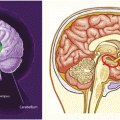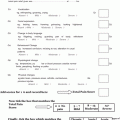Keep this in mind as you read Joyce’s story.
This final chapter is a love story of sorts between a mother, Jane Kontrabecki, who had Alzheimer’s dementia, and her daughter Joyce Markowitz who provided care to her mother and assisted the rest of the family to do the same. Joyce is a nurse and a chief executive officer (CEO) of Long-term Care for the Catholic Health Care System in Western New York. The care that Joyce and the rest of the family provided was patient, loving, and individualized. It was based on Jane’s life story—the activities she enjoyed doing, the way she liked to bake cookies and cakes, the way she liked to celebrate holidays, the significance of her strong religious beliefs—all of these things that the family knew about their mother and grandmother were lovingly woven into her daily care. Although the family was not confronted with every challenging behavior described in this book—they dealt with many of the behaviors in a creative and loving fashion. Much can be learned from those who have walked this journey of care. Let us listen to Joyce’s story that she shared with the authors on November 2, 2011.
First I would like to talk about the fact that I am a nurse and when my Mother first started exhibiting symptoms, I would often address those symptoms based on my training as a nurse. For instance if my mother was confused I would attempt to reorient her to time and place. I learned however that as her disease progressed that most of what I needed to do was very intuitive as to what you would do in a loving relationship. I always made certain for example that when I spoke with her that I pulled myself close so that we were touching. She often appeared to be very lonely even when others were around, but holding her hands and reassuring her through touch was very important especially when she was agitated.
I have a habit with people that I love: I usually greet them by placing my hands on each side of their face. I always greeted both my Father and Mother this way so this was a very familiar form of recognition for my mother and very powerful when she was disoriented. When I came into the room and touched her face she always knew it was me and I think the familiarity of this gesture was the reason she was never confused about my identity.
My mother’s home was very important to her: she never wanted to leave her home even after my father passed away. One of his concerns was that she would be moved away from the home where she raised her children and he knew that if we were to do so that this would be devastating to her. Although her home was her place of stability she would frequently become confused about where she was and she would ask that we take her home. When she initially exhibited this behavior I would often be able to calm her agitation by showing her the photographs in the house and ask her to identify the faces so she could associate the people with her home. As her disease progressed this was no longer a viable solution, and when she thought she wasn’t home she would be obsessed with that throughout the evening often crying and begging for someone to take her home. When this behavior occurred my daughter and I would take her out of the house for a ride around the area where she had lived for more than 50 years. We would pass places that were familiar to her and ask her questions about these places. We would ask, “Who used to work there?” and she would reply, “Oh I used to work there.” “Who went to school there?” and she would reply, “That is where my children went to school.” As we would get closer to home we would ask her to help us find her house. She would look out the window, point out specific landmarks and tell us how to get back home. On a good day she would tell us to slow down and point out the specific driveway to her home. Once we pulled in we would announce, “we are home” and we would take her back inside. She would then be settled for the evening and realized she was home. There were weeks that we needed to do this seven days in a row but it was a ritual that brought her peace and calmness so we continued to take her for these rides.
Growing up my Mother was known for being a great baker. When we were children she would get up very early on Sunday morning and make enough dough for six loafs of bread, dozens of dinner rolls, cinnamon rolls and coffee cakes. You could smell the aroma of the sweet dough baking throughout the house. She loved to cook, bake and make her own jelly and jams. My daughter who inherited these skills from my Mother began baking with her at least once every week. My daughter would pre-measure the ingredients of recipes that my mother and her grandmother had baked for many years and place all the needed utensils within mother’s reach. My mother would pour all the ingredients into the bowl while my daughter cracked the eggs and dealt with the tasks that presented more of a challenge. At Christmas we followed the same approach but would make familiar recipes that also challenged her manual dexterity. We would make dough for example that needed to be rolled in the palm of her hand. We would scoop the dough and let her roll it into a ball and place it on the cookie sheets. We also would allow her to place the sprinkles on the cutouts. This created a bit of a mess but she enjoyed being able to do something that she had done for so many years. Simple repetitive tasks that she was able to achieve brought back what she had so enjoyed doing when she was healthy. These were the moments when we would see little bursts of her “old self” where she would actually be able to engage with us; she would be more oriented and she would seem like herself, even if it only lasted for a short time.Stay updated, free articles. Join our Telegram channel

Full access? Get Clinical Tree





